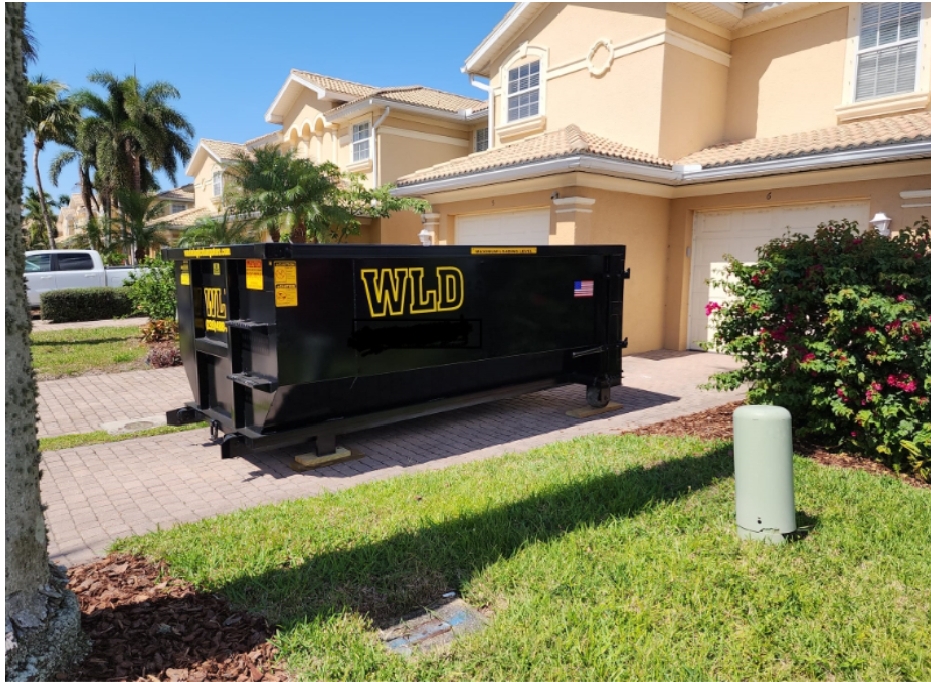When undertaking a project that generates a significant amount of waste, choosing the right size of Dumpsters Cape Coral is essential for efficient waste management.
Whether it’s a residential renovation, a construction site, or a large-scale cleanup, selecting the appropriate dumpster size can streamline the waste disposal process and ensure that you have adequate space to contain all waste materials.
In this article, we will provide eight tips for choosing the right size of dumpsters for your project.
Table of Contents
Toggle1. Assess The Scope Of Your Project
The first step in selecting the right dumpster size is to assess the scope and scale of your project.
Consider the size of the area being renovated or the square footage of the construction site.
The amount of waste generated will likely be greater for larger projects, requiring a larger dumpster.
Understanding the project’s scope will help you estimate the volume of waste that must be contained, allowing for a more accurate selection of the appropriate dumpster size.
2. Estimate The Amount Of Waste
Once you understand the project’s scope, estimate the amount of waste that will be generated.
This includes the materials being disposed of, such as construction debris, furniture, appliances, or general household waste.
Consider the volume of waste produced daily or weekly to determine how frequently the dumpster will need to be emptied. An accurate estimate of the waste volume will help you choose a dumpster size that can accommodate the entire project duration.

3. Consider The Types Of Waste
Different types of projects generate different types of waste. For example, a construction site may produce heavy debris such as concrete, bricks, or asphalt, while a residential cleanup may include lighter materials like furniture, appliances, and household items.
Understanding the types of waste generated is crucial in selecting the appropriate dumpster size.
Additionally, some companies offer specialized dumpsters for specific kinds of waste, such as concrete or yard waste, which can further streamline the disposal process.
4. Evaluate Available Space
Consider the available space at the project site when choosing a dumpster size. Larger dumpsters require sufficient space for delivery, placement, and eventual pickup.
Measure the area where the dumpster will be located to ensure it can accommodate the size of the dumpster, as well as the necessary clearance for the delivery and removal process.
It’s essential to ensure the chosen dumpster size fits within the constraints of the project site without causing obstructions or safety hazards.
5. Understand Weight Restrictions
It’s essential to understand the weight restrictions imposed by the dumpster rental company. Different dumpster sizes have specific weight limits that, if exceeded, can result in additional fees or transportation issues.
Ensure that the estimated weight of the waste, especially for heavy materials like concrete or roofing materials, aligns with the weight capacity of the chosen dumpster size.
Understanding weight restrictions will help avoid complications and unforeseen costs during the waste disposal process.
6. Choose Flexibility
In some cases, projects may generate varying amounts of waste over time. Opting for a dumpster size that offers flexibility can be advantageous.
For example, choosing a slightly larger dumpster than initially estimated provides a buffer for any unexpected increases in waste volume.
Additionally, some companies offer adjustable rental periods, allowing for extensions or early removal based on the project’s changing needs. Flexibility in both size and rental duration can help accommodate fluctuations in waste generation.
7. Consider Environmental Impact
When choosing a dumpster size, consider the environmental impact of waste disposal. Choosing a larger dumpster than necessary can result in excess material being sent to landfills, contributing to environmental concerns.
Conversely, choosing a too small size may lead to overflow and difficulties in containing and managing the waste.
Balance the need for adequate space with a commitment to responsible waste disposal and sustainability when selecting the right dumpster size for your project.
8. Seek Professional Advice
When in doubt, seek professional advice from dumpster rental companies. Experienced professionals can provide insights into the optimal dumpster size based on the specific details of your project.
They can also offer guidance on waste management best practices, weight restrictions, and other considerations for choosing the right dumpster size.
By consulting experts in the field, you can make an informed decision and ensure that your waste management needs are met effectively.
Conclusion
Choosing the right size of dumpsters for your project is crucial for efficient waste management.
By assessing the project scope, estimating waste volume, considering available space, understanding weight restrictions, opting for flexibility, and seeking professional advice, you can select a dumpster size that aligns with the specific needs of your project.
With these tips, you can effectively streamline the waste disposal process and ensure that your project proceeds with minimal disruptions while upholding environmental and regulatory standards.
WasteLogic Dumpsters LLC is here to help you with all your dumpster rental needs. We offer many dumpster sizes and flexible rental options to accommodate any project.
Contact us today to discuss your waste management requirements and let our experts guide you in choosing the right dumpster size for your project.
More Stories
Brighten Your Space The Benefits of a Bathroom Mirror with Light
When it comes to bathroom design, a bathroom mirror with light is more than just a practical accessory. It is...
Why a Baby Mobile is More Than Just a Nursery Decoration Essential Benefits and Tips
When preparing for a new baby, one of the most exciting parts of setting up the nursery is selecting the...
Discover Affordable Property for Sale in Malta Under 100K Your Guide to Smart Investment
Malta, with its rich history, stunning Mediterranean coastline, and vibrant culture, has long been a sought-after destination for real estate...
The Role of Digital Marketing in Growing Your Business
In the modern business landscape, digital marketing is no longer an optional strategy—it is essential for the growth and success...
How to Increase Online Visibility with a Strategic SEO Plan
In today’s digital world, where businesses and brands are constantly vying for attention, an effective SEO (Search Engine Optimization) strategy...
Spartan Capital Securities LLC: A Full-Service Brokerage with a Client-Centric Approach
Spartan Capital Securities LLC has carved out a notable presence in the financial services industry. As a full-service brokerage and...


